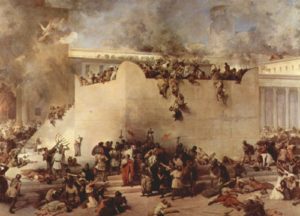Several years ago, in a post entitled “Tracing tragedy,” we explored the claim that national Jewish tragedies take place on Tisha b’Av, the Fast of Av, or within the three week mourning preceding the actual fast day.
With Tisha b’Av approaching this Monday night, we thought it might be time to revisit the topic, as more tragic events are now being assigned to this infamous day in Jewish history.
There are two issues with this approach: 1. Many of these events did not in fact take place on 9 Av; and 2. Why is it important to fit all tragedies in a neat box?
Here are some of the events said to take place on 9 Av that did not:
- The outbreak of WW I (war declared 5 Av; Germany joined 9 Av)
- The declaration of the First Crusade (24 Av)
- The beginning of deportations from the Warsaw Ghetto (8 Av)
- The AMIA bombing in Buenos Aires (10 Av)
- The expulsion of Jews from Spain, and from England (Decree signed in March of that year; Jews ordered to leave by July 31, which was 7 Av; some accounts say the last Jews left on 9 Av)
While it turns out that some of these took place during the Three Weeks, none took place on 9 Av, and some took place at totally different times of the year. The Warsaw Ghetto deportations to Treblinka did begin during the Three Week period (as did the beginning of the liquidation of the Kovno Ghetto), and we discovered the tragic tale of a Judenrat member, Adam Czerniakow, who refused to cooperate with the Nazi authorities, choosing instead to kill himself — on 9 Av.
Recent events in Israel, too, would point to the Three Weeks as being a tragic time, with the gruesome murder of three Jews at their Shabbat table. But as well know, terrorist attacks also take place in the fall, winter and spring.
No matter what did, or did not, take place on Tisha b’Av, two tragedies certainly did: the destruction of the Temples, which have defined the Jewish experience to this day — a nation in exile. Because of these destructions, Tisha b’Av became the national Jewish day for mourning. Regardless of the actual dates of subsequent tragedies, they all stem from those initial tragedies, making Tisha b’Av the appropriate occasion for collective mourning.












